Periods of Influence
The following centuries proved to be pivotal for the development of our nation’southward currency. Explore the timeline for an in-depth expect.
1700s
1690
Colonial Notes
Paper currency in the United States is born, issued by the Massachusetts Bay Colony to fund military expeditions. Other colonies chop-chop accept up the practice of issuing newspaper notes.

Prototype:
Smithsonian National Museum of American History by Leonard H. Finn
,
Usage Weather condition Apply (https://world wide web.si.edu/Termsofuse)
1739
Franklin’s Unique Colonial Notes
Benjamin Franklin takes on counterfeiting, using his Philadelphia press firm to produce colonial notes with nature prints—unique raised patterns bandage from actual leaves. This process adds an innovative and effective counterfeit deterrent to notes.
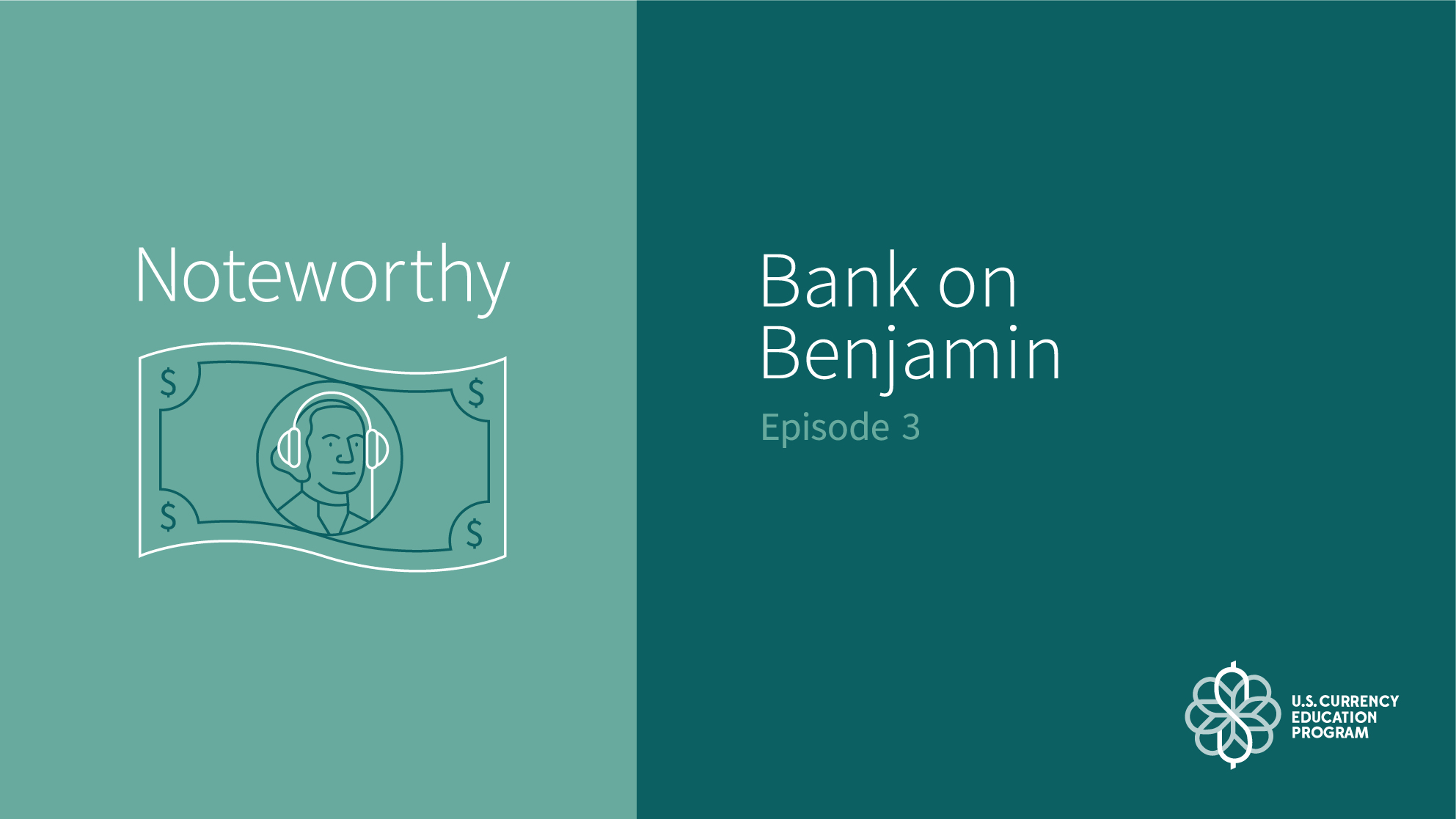
1766
Independence and Strength
$10
Sure designs of Continental Currency feature illustrations inspired by the thirteen colonies fighting and defeating Smashing Britain in the American Revolution. These illustrations signify the colonies’ values and virtues.

Paradigm:
National Numismatic Drove at the Smithsonian Institution
,
Creative Commons Attribution-Share Alike iii.0 Unported
1775
Continental Currency
The phrase “not worth a Continental” is coined after the Continental Congress problems paper currency to finance the Revolutionary State of war, currency that speedily loses its value considering of a lack of solid backing and the rise of counterfeiting.

Prototype:
University of Notre Dame
,
Public Domain
1776
The Outset $two Note
$2
The first $2 notes are Continentals and are nine days older than America. On June 25, 1776, the Continental Congress authorizes issuance of the $ii denominations in “bills of credit” for the defense of America.
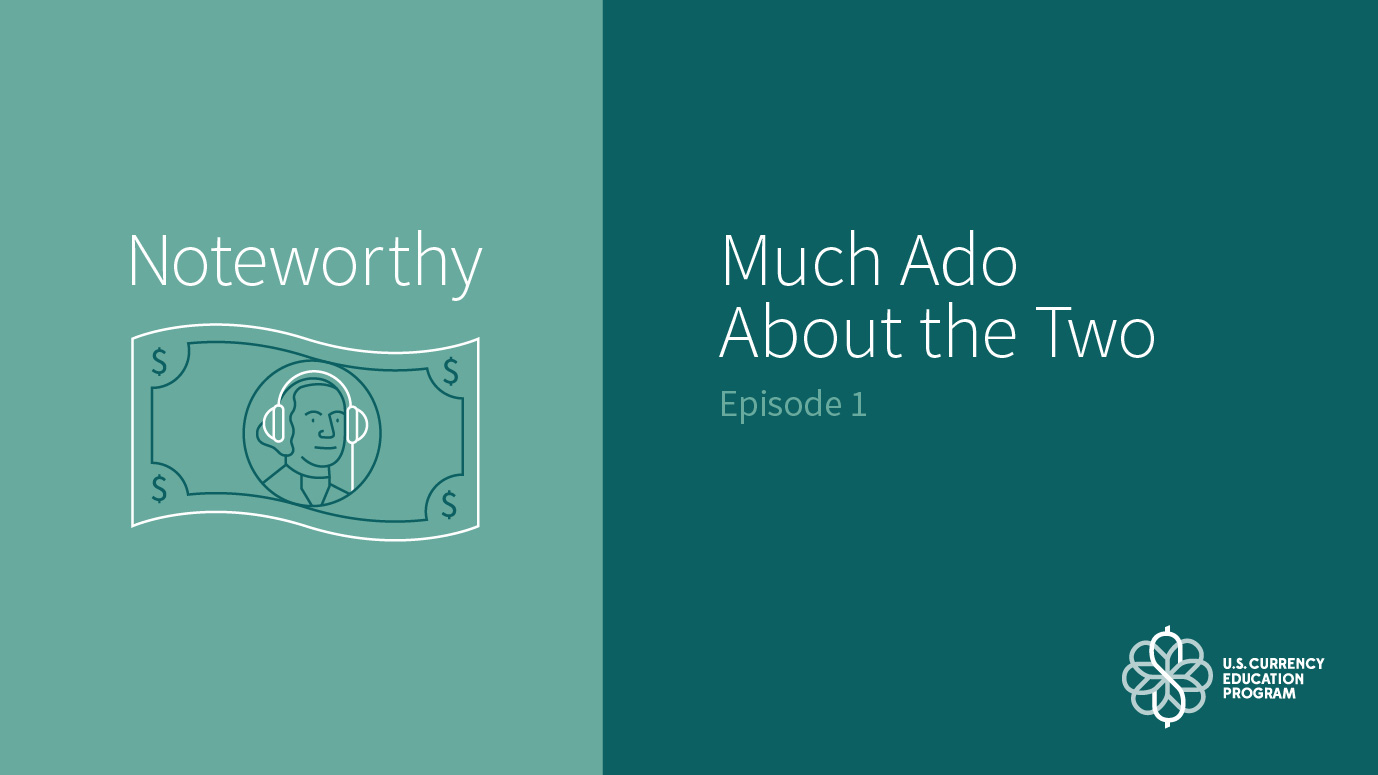
1785
Adoption of the Dollar Sign
$1
The United States officially adopts the dollar sign in 1785. The symbol evolves from the Spanish American figure for pesos. From colonial to mod times, the Us has issued several types of banknotes with unique purposes, like paying taxes, earning involvement on an investment, or buying goods.

Image:
Jesper Zedlitz
,
Creative Commons Attribution-Share Alike 3.0 Unported
1791
The Depository financial institution of Usa
Alexander Hamilton establishes the Banking company of the United States to create a organisation of credit for the government. The depository financial institution is the first of several in the state to issue private currencies facilitating borrowing and lending.

Image:
,
CEP Website
1792
The Mint Human activity
$50
On April 2nd, 1792, Congress establishes the coinage organisation of the United States by passing “The Mint Act.” The U.S. adopts the decimal system for currency.

Prototype:
U.S. Government
,
Public Domain
1800s
1813
President James Madison
James Madison’s portrait features on multiple series of the $5,000 Treasury bearer notes. These large value notes are originally redeemable for gold. The note back features George Washington resigning his committee.
1861
“Cash”
$5, $10, $20
In order to finance the Civil State of war, Congress authorizes the U.S. Department of the Treasury to issue non-interest-bearing Need Notes. These notes earn the nickname “greenbacks” because of the light-green ink on the back. All U.S. currency issued since 1861 remains valid and redeemable at total confront value.

Prototype:
Federal Reserve Bank of San Francisco
1861
$10 Need Notes
$10
The kickoff $x notes issued by the U.S. federal regime are Demand Notes, featuring President Abraham Lincoln’s portrait, fine-line engraving, and intricate geometric lathe patterns. Each Need Annotation was immediately redeemable in gold or argent “upon demand” at seven specific banks around the nation. The Treasury issued Need Notes in 1861 and 1862.

Image:
Federal Reserve Bank of San Francisco
1862
The states Notes
$1, $2, $five, $x, $20, $50, $100
Later on the Treasury issued Need Notes, Congress authorizes a new course of currency known as “United States notes” or “Legal Tender notes.” These notes replace Need Notes. They continue to circulate until 1971. Like to Demand Notes, they are nicknamed “greenbacks.”

Image:
,
Public Domain
1862
Secretary Salmon P. Hunt
$i
The Treasury seal first appears on currency during the Civil War. The federal authorities problems the first $1 Legal Tender” notes. These banknotes feature a portrait of Secretarial assistant of the Treasury Salmon P. Hunt.

Prototype:
The Bureau of Engraving and Press
,
Artistic Commons Attribution-Share Alike 3.0 Unported
1862
The Foundation of Modern Pattern
By 1862, the Demand Notes incorporate fine-line engraving, intricate geometric lathe piece of work patterns, a U.Southward. Department of the Treasury seal, and engraved signatures to assist in counterfeit deterrence. To this day, U.Due south. currency continues to add features to deter counterfeiting.

Image:
National Numismatic Collection, National Museum of American History
,
Creative Commons Attribution-Share Akin 4.0 International
1862
Treasury Seal
The Treasury seal showtime appears on currency during the Civil State of war. While the color and manner of the seal changes over the years, the internal seal remains essentially the same to modernistic day with a key, scales, and stars.

Prototype:
1863
Trumbull’due south Paintings
$100
The first $100 and $500 national banking concern notes characteristic John Trumbull’s paintings “Declaration of Independence” and “Surrender of General Burgoyne.” Both paintings now hang in the U.Southward. Capitol Building.

Image:
Builder of the Capitol
,
Public Domain
1863
Starting time Division of the National Currency Bureau
Congress creates the Office of the Comptroller of the Currency (OCC) and National Currency Bureau to handle the newly created National Bank Notes.

Epitome:
United States Department of the Treasury
,
Creative Commons Attribution 3.0 Unported
1863
Liberty and Justice
$50
American money has depicted Freedom and Justice as allergorical figures. On interest-begetting notes of 1863, Justice can be seen property her scales. She appears on the right side of a $50 beak from 1880 holding a sword and shield.

Image:
National Numismatic Collection, National Museum of American History
,
Creative Commons Attribution-Share Alike four.0 International
1863
A National Banking Arrangement
Congress establishes a national banking system and authorizes the U.South. Department of the Treasury to oversee the issuance of National Banknotes. This system sets Federal guidelines for chartering and regulating “national” banks and authorizes those banks to outcome national currency secured past the buy of United States bonds.
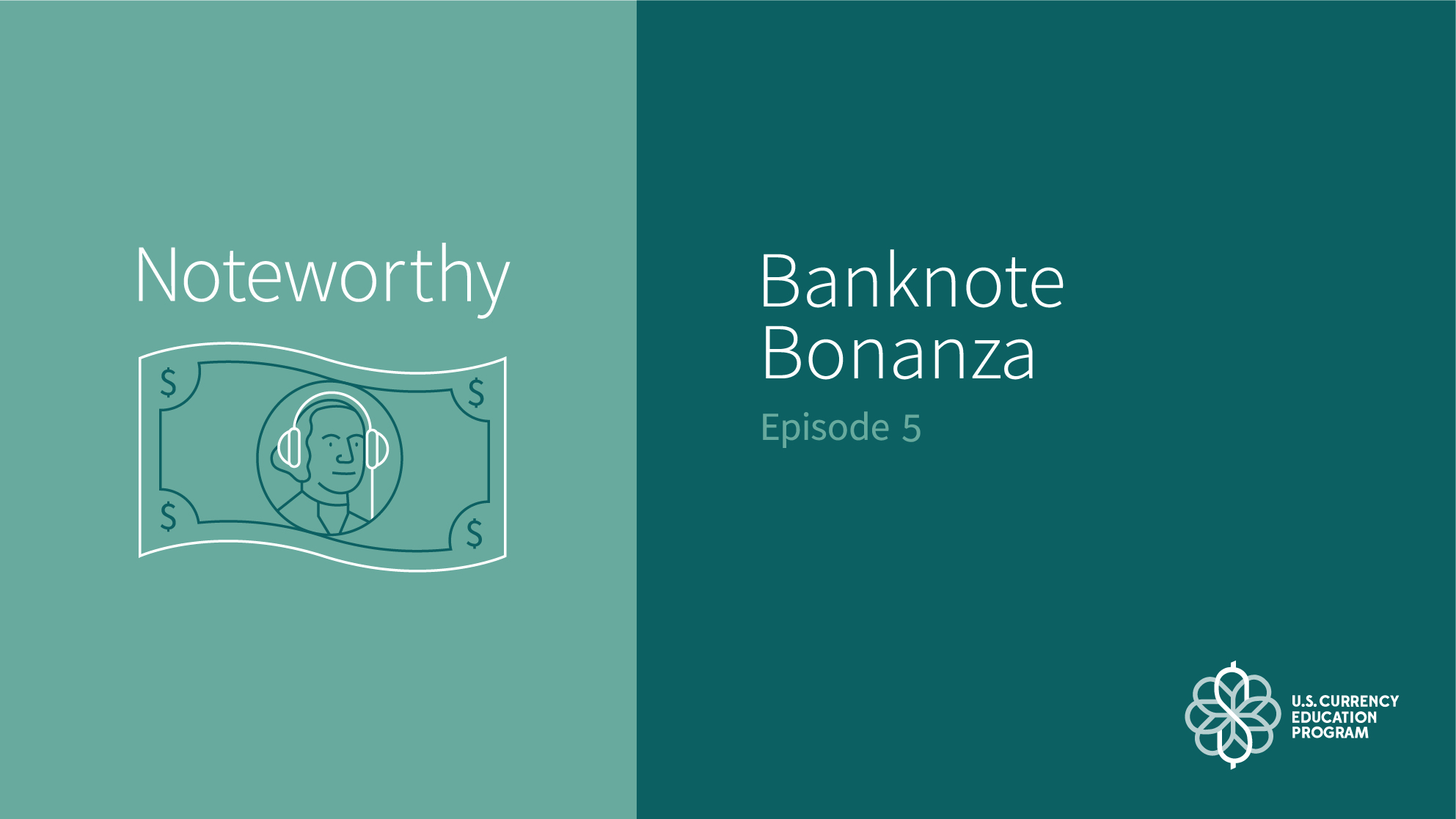
1865
The Secret Service
The The states Secret Service is established to deter counterfeiters, whose activities diminish the public’s conviction in the nation’s currency.

Image:
U.South.S.Due south.
,
Public Domain
1869
George Washington on $ane Annotation
$1
The 1869 serial of United States notes features the start utilise of George Washington’s portrait.

Image:
Museum of Fine Arts, Boston
,
Public Domain
1869
Centralized Printing of U.s. Notes
$xx, $100
The Bureau of Engraving and Printing begins engraving and printing the faces and seals of U.Southward. banknotes. Before this, U.Due south. banknotes were produced by individual banknote companies and then sent to the Bureau of Engraving and Printing for sealing, trimming, and cutting.

Image:
CEP Website
1874
Bureau of Engraving and Printing
Congressional legislation recognizes the U.Southward. Section of the Treasury’due south Agency of Engraving and Printing (BEP) with specific allocation of operating funds for fiscal yr 1875.
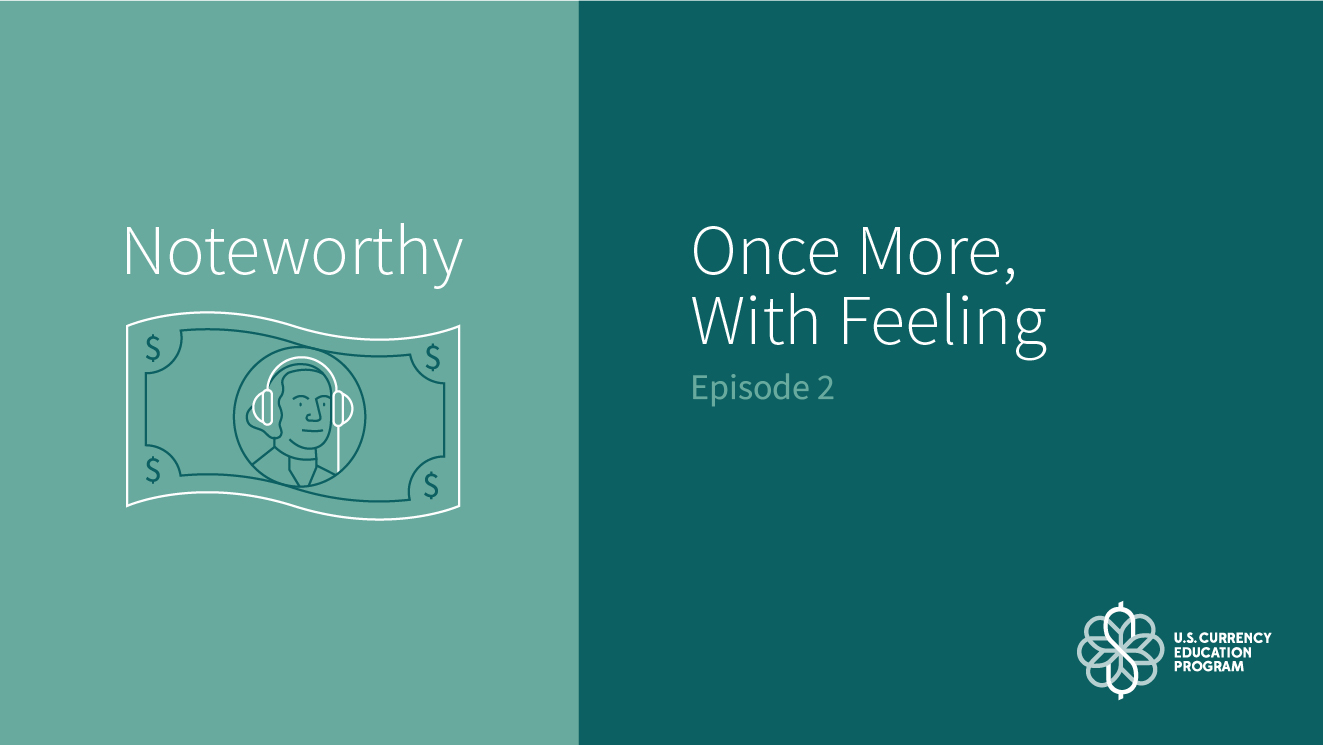
1877
Engraving and Printing
Congress mandates that the U.S. Section of the Treasury solely performs the engraving and printing of notes, bonds, and other securities of the United States.

Image:
Bureau of Engraving and Press
,
Creative Commons Attribution-Share Alike 3.0 Unported
1878
Argent Certificates
The U.S. Department of the Treasury bug silver certificates. Legislation directing an increase in the purchase and coinage of silver authorizes the creation of the certificates.

Image:
CEP Paradigm Collection
1881
Senator Blanche Kelso Bruce
Former United States Senator Blanche Kelso Bruce is the beginning African-American to accept his signature on American paper currency. He becomes the Register of the United states Treasury in 1881.

Epitome:
National Museum of American History
,
Public Domain
1886
Women on Currency
$1
$1 silver certificates characteristic Martha Washington in their 1886 and 1896 serial.

Image:
The Agency of Engraving and Printing
,
Creative Commons Attribution-Share Alike three.0 Unported
1890
Treasury Notes
The U.S. Section of the Treasury begins issuing Treasury notes.

Paradigm:
The Agency of Engraving and Printing
,
Creative Eatables Attribution-Share Alike 4.0 International
1896
Jim the Penman
Emmanuel Ninger is arrested for counterfeiting banknotes. Nicknamed “Jim the Penman” past the U.South. Surreptitious Service, Ninger uses only a pen and a brush to counterfeit money. While his work is convincing, he is caught because the ink dissolved on one of his counterfeits.

Image:
American Numismatic Society
1896
Educational Annotation Series
$i
In 1896 US released a series of silver certificates with neoclassical designs. They were referred to as the “Educational Serial”. The $1 note had emblematic figures of history instructing the youth. Two dollar notes had figures of scientific discipline presenting the children, Steam and Electricity, to adults, Commerce and Manufacture.

Image:
The Agency of Engraving and Printing
,
Creative Commons Attribution-Share Alike iv.0 International
1900s
1913
Federal Reserve Act
The Federal Reserve Human activity of 1913 establishes the Federal Reserve as the nation’south central bank and provides for a national banking system that is more responsive to the fluctuating fiscal needs of the state. The Federal Reserve Lath bug new currency called Federal Reserve notes.

Prototype:
,
Public Domain
1914
The First $10 Federal Reserve Notes
$10
The Federal Reserve Lath, which is separate from the Treasury Department, bug $10 Federal Reserve notes featuring Andrew Jackson’s portrait. These notes are physically larger than $ten bills currently in circulation.

Image:
The Agency of Engraving and Printing
,
Creative Commons Attribution-Share Alike 4.0 International
1918
$1,000 Federal Reserve Notes
The Federal Reserve Board bug $1,000 notes featuring Alexander Hamilton’s portrait. This neb is discontinued in 1969.

Image:
CEP image collection
1918
$10,000 Federal Reserve Notes
The Federal Reserve Lath bug $10,000 notes featuring Salmon P. Chase’s portrait. This notation is intended for bank-to-bank large value transfers, not public apportionment.

Image:
The Bureau of Engraving and Printing
,
Creative Commons Attribution-Share Alike 4.0 International
1918
Introduction of “Large Denomination Banknotes”
In 1918, the Federal Reserve Lath begins issuing currency in $500, $1,000, $5,000, and $10,000 denominations.

Prototype:
The Bureau of Engraving and Printing
,
Artistic Eatables Attribution-Share Alike 4.0 International
1928
$x bill with Motorcar
$ten
BEP engraver Louis S. Schofield added an car in front end of the Treasury edifice image on the back of the $ten notes issued between 1928 and 1996. The machine was based on a number of different models and brands that were available in the 1920s.

Paradigm:
CEP Paradigm Collection
1928
Serial Numbers on Banknotes
$20
The United States adds unique serial numbers to banknotes.

Image:
CEP Image Drove
,
CEP Website
1929
Standardization of Blueprint
$one, $ii, $5, $ten, $20, $l, $100
The appearance of U.South. banknotes changes greatly in 1929. In an effort to lower manufacturing costs, all Federal Reserve notes are fabricated nigh 30 percent smaller—measuring 6.14 10 ii.61 inches, rather than seven.375 x 3.125 inches. In addition, standardized designs are instituted for each denomination, decreasing the number of designs in circulation and making information technology easier for the public to distinguish between genuine and apocryphal notes.

Epitome:
The Agency of Engraving and Printing
,
Creative Commons Attribution-Share Alike four.0 International
1934
$100,000 Gold Certificate
The Treasurer of the Us issues $100,000 gilded certificates to Federal Reserve Banks to settle large value transactions. The golden document features Woodrow Wilson and do not circulate amidst the public.

Image:
The Bureau of Engraving and Printing
,
Creative Commons Attribution-Share Alike 4.0 International
1935
Peachy Seal of the United states
$1
$1 Federal Reserve notes characteristic the obverse and reverse of the Great Seal of the U.s.. The Seal dates to 1782. Its reverse side depicts the Eye of Providence and an unfinished pyramid symbolizing the nation’south forcefulness and duration. The Seal’s obverse side shows an hawkeye bearing a shield and clutching both an olive branch and arrows in its talons.

Prototype:
CEP Epitome Collection
1935
Victor Lustig
Victor Lustig is arrested for using a “money-making machine” to produce counterfeit currency.

Paradigm:
American Numistmatic Club, Us Surreptitious Service
1941
“Know Your Money” Campaign
The Secret Service prints “Know Your Coin” booklets to brainwash the public on designs and features of 18-carat currency. It features cartoons and displays images of counterfeit bills adjacent to 18-carat bills.

Image:
American Numistmatic Lodge, Usa Undercover Service
,
http://numismatics.org/know-your-money-educating-the-public-nigh-counterfeit-coin/
1942
Special World War II Currency
The BEP prints Silvery Certificates and Federal Reserve notes bearing a “Hawaii” overprint. These items merely circulate in Hawaii, and their chocolate-brown seals and serial numbers differentiate from other certificates. They are hands identifiable and tin be declared valueless if Hawaii is overran by enemy forces.

Epitome:
The Bureau of Engraving and Printing
,
Creative Eatables Attribution-Share Alike 4.0 International
1943
Allied Armed services Currency
The BEP prints Allied Armed services Currency for the utilize by Allied invasion forces in Italia. AMC helped prevent inflation after an Centrolineal forces landed in Sicily. Soldiers used similar AMC in Austria, Germany, France and Japan.

Image:
Banknote World
,
Public Domain
1945
$500 Federal Reserve Notes
The Federal Reserve Board problems $500 bills that feature President William McKinley’due south portrait. These circulate for roughly two decades and remains legal tender.

Prototype:
The Agency of Engraving and Printing
,
Artistic Commons Attribution-Share Alike four.0 International
1956
“In God We Trust”
Following a 1955 police force requiring “In God We Trust” on all currency, the motto first appears on banknotes on series 1957 $1 silvery certificates, so on 1963 serial Federal Reserve notes.
1963
Currency and Gold
Congress prohibits the redemption of currency for gilt.

Prototype:
The Bureau of Engraving and Printing
,
Creative Commons Attribution-Share Alike 4.0 International
1963
The Beginning ATM
Automatic teller machines (ATM) showtime appear in New York Metropolis. They permit bank customers to retrieve greenbacks from their accounts without needing to visit the bank.
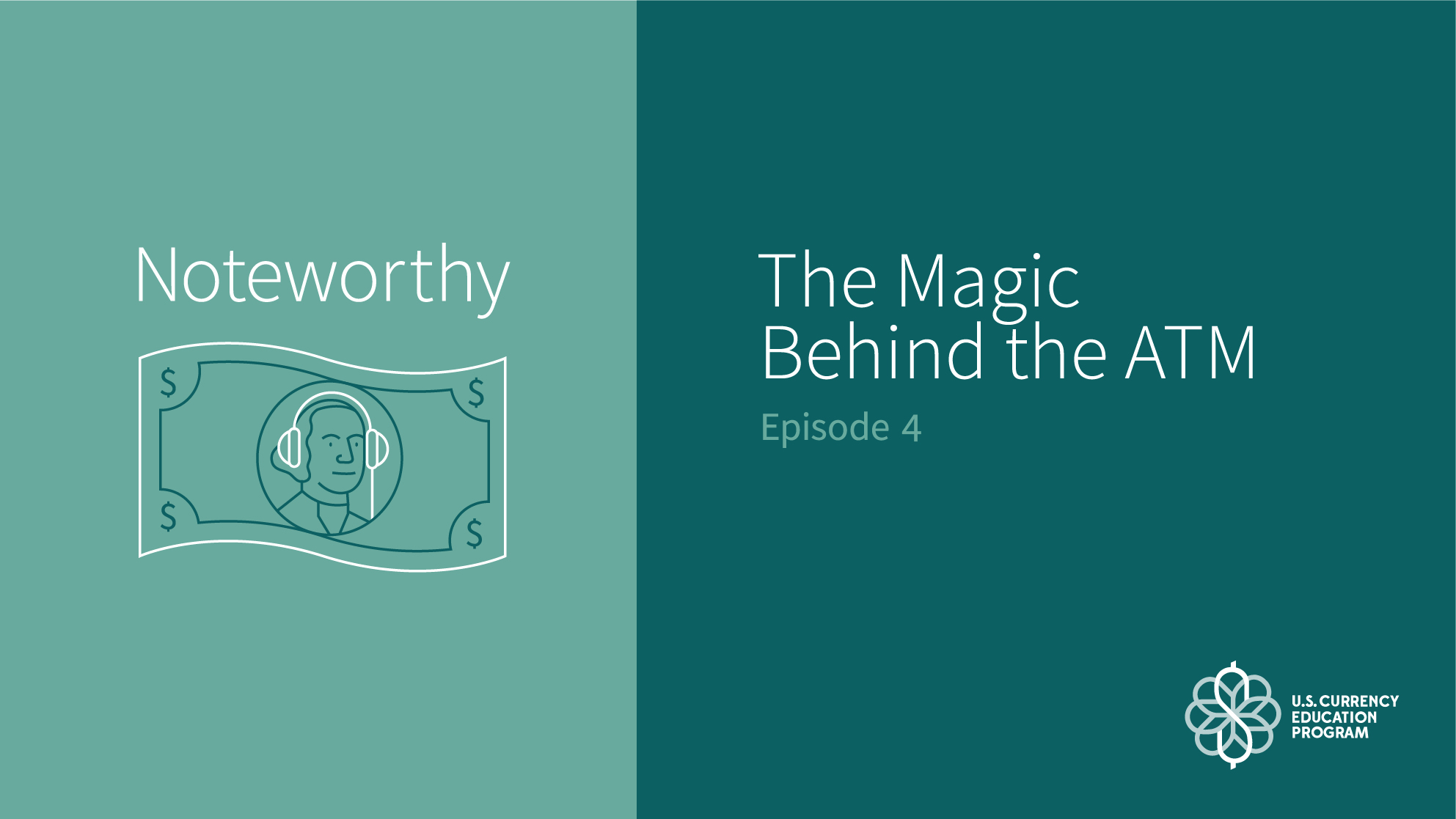
1969
End of Large Denomination Bills
On July 14, 1969, the Federal Reserve and the U.S. Department of the Treasury appear that banknotes in denominations of $500, $one,000, $v,000, and $x,000 would be discontinued due to lack of apply. Although they were issued until 1969, they were terminal printed in 1945.

Image:
The Bureau of Engraving and Printing
,
Creative Commons Attribution-Share Alike 4.0 International
1971
United states Notes Discontinued
Because United States notes no longer served whatsoever role non already adequately met past Federal Reserve notes, their issuance was discontinued and, commencement in 1971, no new U.s. notes were placed into circulation.

Epitome:
The Federal Reserve Bank of San Franciso
,
Public Domain
1976
Reintroduction of the $2 Notation
On the 233rd anniversary of Thomas Jefferson’southward nascency, and to commemorate the bicentennial, the $2 Federal Reserve note is re-introduced featuring a new vignette: Trumbull’s painting “The Signing of the Annunciation of Independence.”

Image:
CEP image collection
1977
Azie Taylor Morton
Azie Taylor Morton is the first African-American woman to have her signature on a Federal Reserve note. Morton is the 36th Treasurer of the United states.

Image:
Role of the U.S. Treasurer
,
Public Domain
1990
Security Thread and Microprinting
A security thread and microprinting are introduced in Federal Reserve notes to deter counterfeiting past copiers and printers. The features first appear in Series 1990 $100 notes. Past Series 1993, the features appeared on all denominations except $ane and $two notes.

Image:
CEP website
1990
Western Currency Facility
The BEP’s Western Currency Facility in Fort Worth, Texas, begins producing currency. Information technology is the first government facility exterior Washington, D.C., to impress Federal Reserve notes.
1996
Currency Redesign
In the first pregnant design modify since the 1920s, U.S. currency is redesigned to incorporate a series of new counterfeit deterrents. Issuance of the new banknotes begins with the $100 annotation in 1996, followed by the $50 note in 1997, the $20 note in 1998, and the $x and $5 notes in 2000.

Image:
CEP website
2000s
2003
The Redesigned $20 Note
The new-pattern $20 note features subtle background colors of green and peach. The $xx note includes an embedded security thread that glows greenish when illuminated by UV light. When held to light, a portrait watermark of President Jackson is visible from both sides of the note. In add-on, the note includes a color-shifting numeral twenty in the lower right corner of the note.

Image:
,
CEP Website
2004
The Redesigned $50 Note
$l
The currency redesigns continue with the $l note, which features subtle groundwork colors of blueish and red. The $50 note includes an embedded security thread that glows xanthous when illuminated by UV light. When held to light, a portrait watermark of President Grant is visible from both sides of the note. In addition, the notation includes a colour-shifting numeral 50 in the lower right corner of the note.

Image:
,
CEP Website
2006
The Redesigned $10 Note
$ten
The new-design $10 notation features subtle background colors of orange, xanthous, and red. The $ten note includes an embedded security thread that glows orangish when illuminated by UV low-cal. When held to calorie-free, a portrait watermark of Treasury Secretarial assistant Alexander Hamilton is visible from both sides of the note. In addition, the note includes a color-shifting numeral 10 in the lower right corner of the note.

Image:
,
CEP Website
2008
The Redesigned $5 Note
The new-design $5 note features subtle groundwork colors of light royal and grey. The $5 notation includes an embedded security thread that glows bluish when illuminated by UV low-cal. Ii watermarks are featured in the $v note, which are visible from both sides of the note when held to light. A vertical pattern of iii numeral 5s is situated to the left of the portrait and a large numeral 5 is located in the blank space to the right of the portrait.

Image:
,
CEP Website
2013
The Redesigned $100 Annotation
$100
In its showtime redesign since 1996, the new-design $100 note features boosted security features including a 3-D Security Ribbon and colour-shifting Bell in the Inkwell. The new-blueprint $100 note also includes a portrait watermark of Benjamin Franklin that is visible from both sides of the note when held to lite.

Prototype:
,
CEP Website
2015
Federal Reserve Currency Website
The Federal Reserve Lath launches uscurrency.gov to inform the public well-nigh the security and pattern features of Federal Reserve notes. This website offers multi-lingual educational materials gratis for public employ.
Image:
,
CEP Website
2020
Banknote Recycling
The 12 Federal Reserve Banks repurpose banknotes not fit for circulation. The banks shred and reuse money that is besides worn or dirty for a number of purposes, such as insulation or compost.
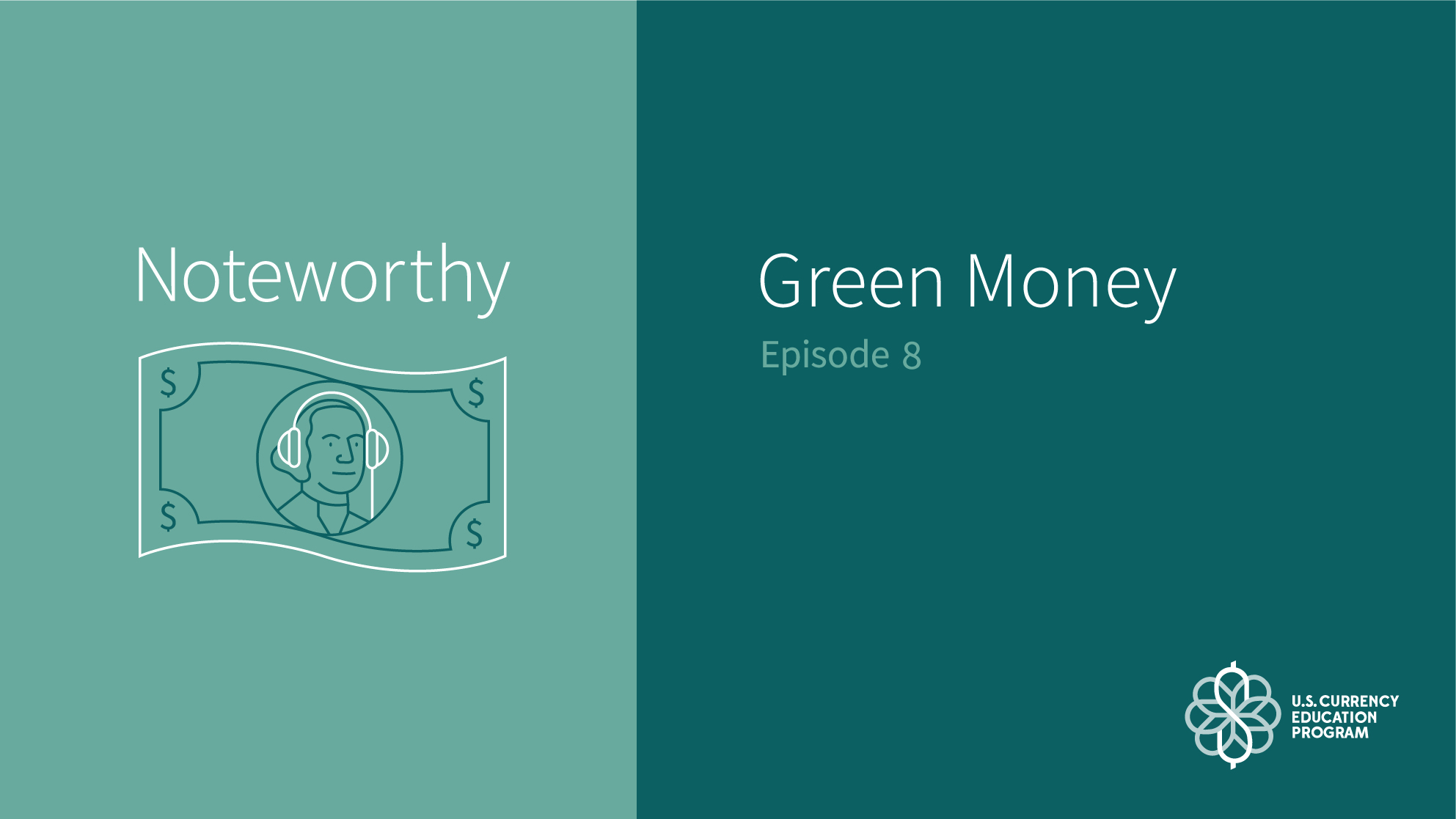
Source: https://www.uscurrency.gov/history
 RosyandBo.com Trusted Information and Education News Media
RosyandBo.com Trusted Information and Education News Media



